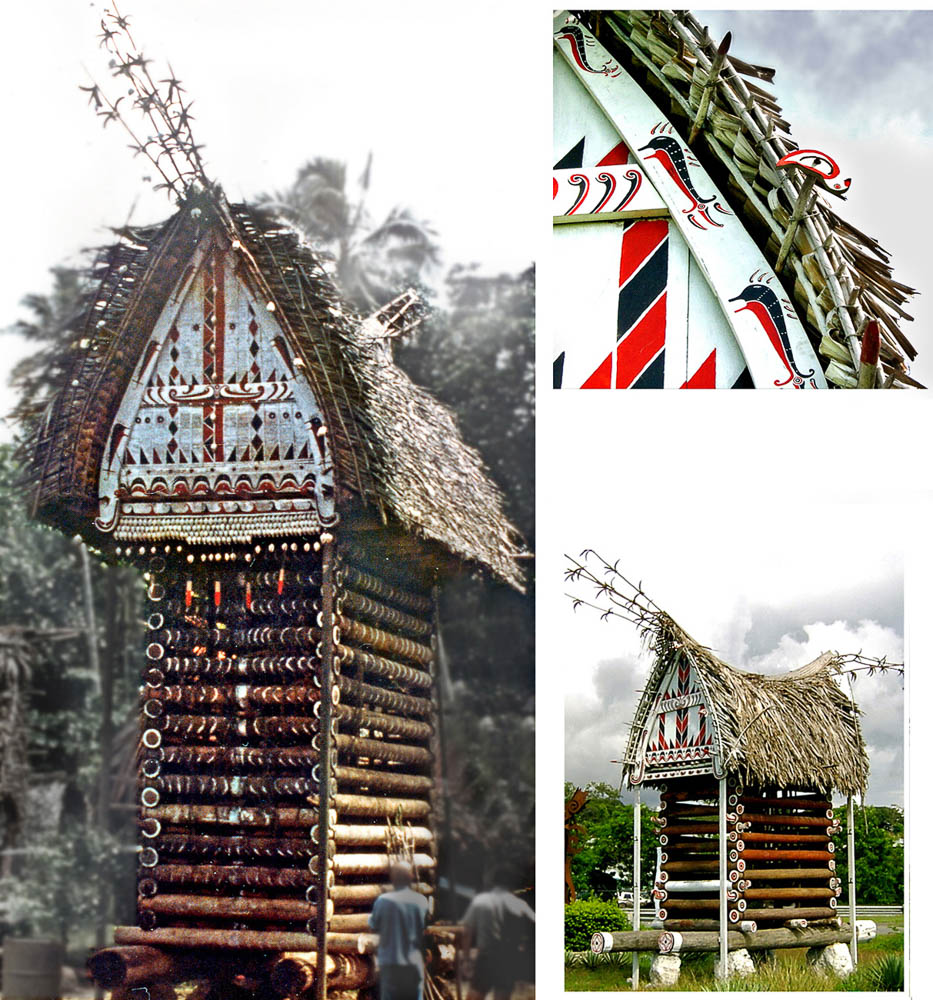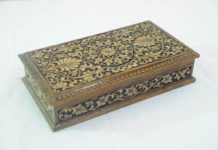
Two areas in PNG are famous for extreme examples of fabulously painted gable ends to special houses. In the Trobriand Islands small, delicate, jewel-like gables are displayed on yam barns and chief’s houses. Contrastingly large and imposingly bright, tall ones are on Abelam haus tambaran fronts from the East Sepik hills.
Decorated gables are still common in some Sepik river areas on different types of traditional building, notably men’s houses. But in some areas, they are no longer made. For example, exotic ones were once found all along the coast from the Papuan Gulf to Port Moresby. And interesting roof ends were also once found on the north coast of New Guinea, and on some islands to the north and east.

Right top: detail of an urban sculptural version of a Trobriand’s yam house at a traffic round-about in Port Moresby in 2003.
Below right: the structure is installed within an anchoring thin steel frame. This modern yam house model is minimally modified by size and simplicity and uses some machined. timber and modern paints. But, the patterns and structure must be done by a properly authorised clan affiliated owner-artist. Photo: Sebastian Fowler
Patterns used as decoration are culture and place specific. However, common to all gable ends are the craft skills manifested in their making. Initiated men who are apprenticed and anointed into their traditional roles control the process and supervise construction. They are helped by others skilled in material cutting, post and frame erecting, framing and binding, thatching and the making of woven or beaten wall surface materials.
The finishing is done by painters, carvers and sculptors. Many of the designs and pieces of art built into such gables are highly charged objects, often representing ancestor or totem spirits and legendary figures. The ornaments play roles such as protection and fertility, which are invested in them by the initiates allowed to make them.
Trobriand Islands gable ends are now also found elsewhere in PNG where the diaspora is present. This includes cities and resorts, particularly in Milne Bay province. A few new commissioned Sepik examples, but many other older gables, or key pieces, from various decorated gables of PNG are in ethnographic museum collections overseas.




